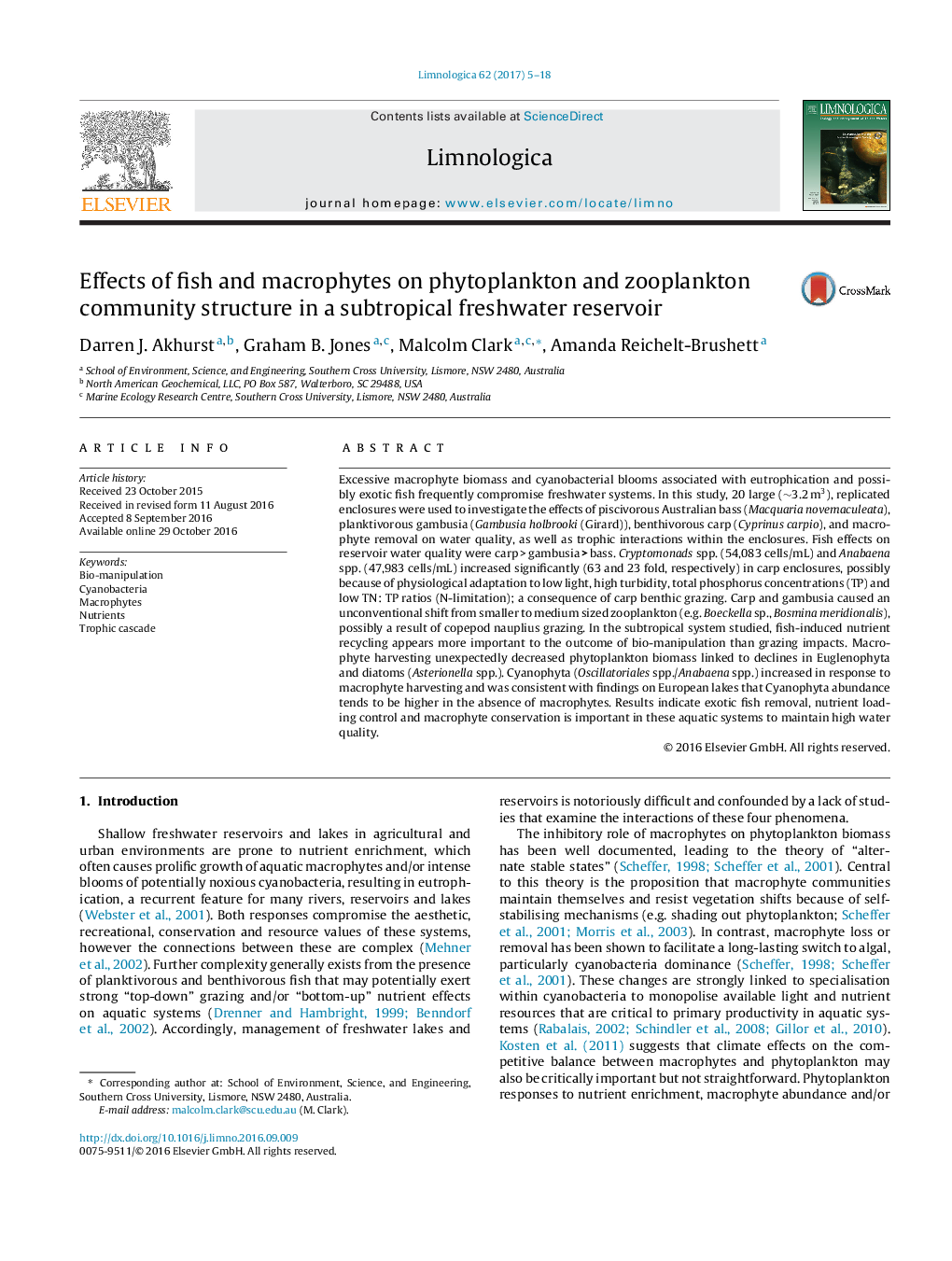| Article ID | Journal | Published Year | Pages | File Type |
|---|---|---|---|---|
| 5744884 | Limnologica - Ecology and Management of Inland Waters | 2017 | 14 Pages |
Excessive macrophyte biomass and cyanobacterial blooms associated with eutrophication and possibly exotic fish frequently compromise freshwater systems. In this study, 20 large (â¼3.2 m3), replicated enclosures were used to investigate the effects of piscivorous Australian bass (Macquaria novemaculeata), planktivorous gambusia (Gambusia holbrooki (Girard)), benthivorous carp (Cyprinus carpio), and macrophyte removal on water quality, as well as trophic interactions within the enclosures. Fish effects on reservoir water quality were carp > gambusia > bass. Cryptomonads spp. (54,083 cells/mL) and Anabaena spp. (47,983 cells/mL) increased significantly (63 and 23 fold, respectively) in carp enclosures, possibly because of physiological adaptation to low light, high turbidity, total phosphorus concentrations (TP) and low TN: TP ratios (N-limitation); a consequence of carp benthic grazing. Carp and gambusia caused an unconventional shift from smaller to medium sized zooplankton (e.g. Boeckella sp., Bosmina meridionalis), possibly a result of copepod nauplius grazing. In the subtropical system studied, fish-induced nutrient recycling appears more important to the outcome of bio-manipulation than grazing impacts. Macrophyte harvesting unexpectedly decreased phytoplankton biomass linked to declines in Euglenophyta and diatoms (Asterionella spp.). Cyanophyta (Oscillatoriales spp./Anabaena spp.) increased in response to macrophyte harvesting and was consistent with findings on European lakes that Cyanophyta abundance tends to be higher in the absence of macrophytes. Results indicate exotic fish removal, nutrient loading control and macrophyte conservation is important in these aquatic systems to maintain high water quality.
